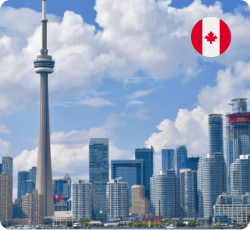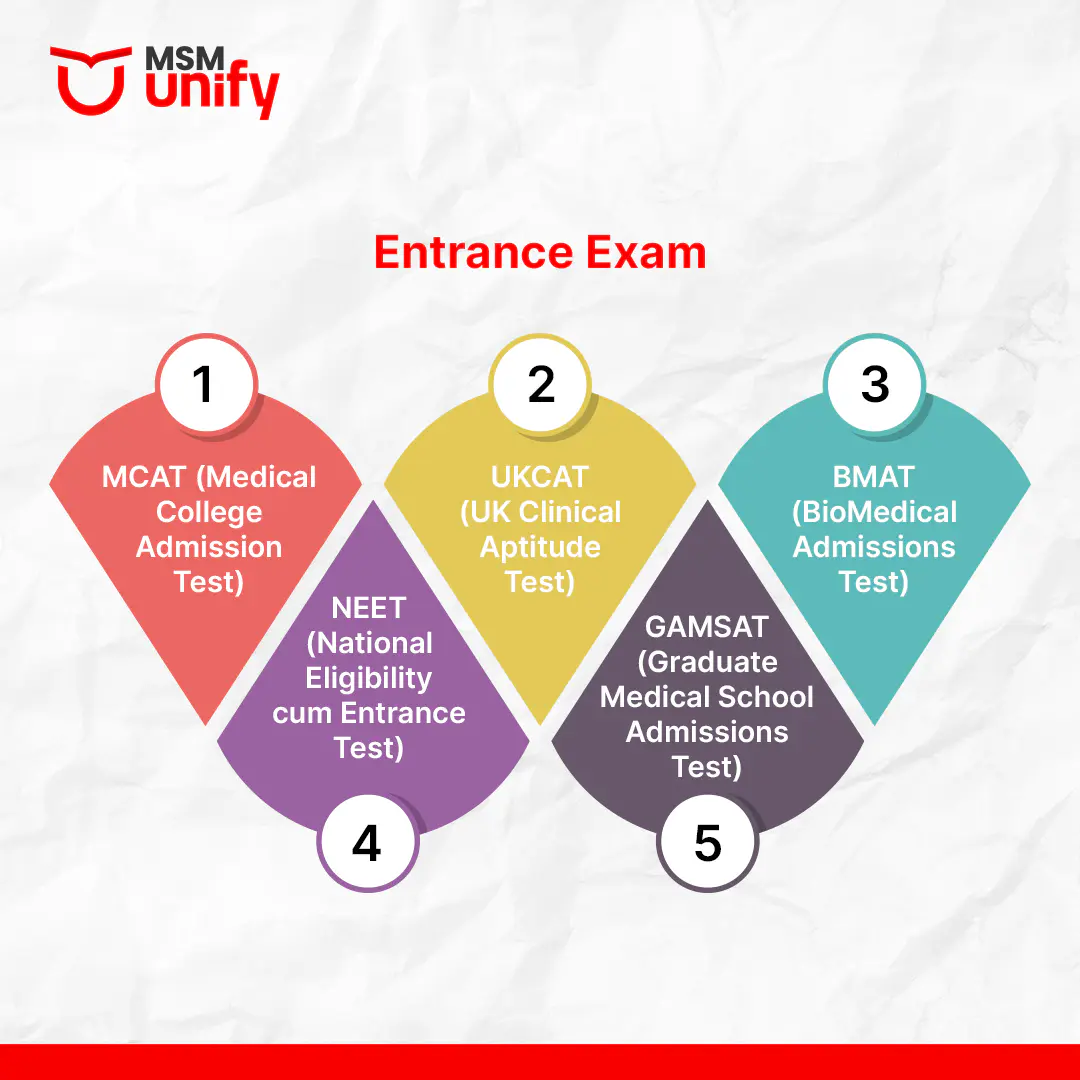In recent years, getting a medical degree overseas has become a hot trend among students. Consider this: every year, over 20,000-25,000 Indian students leave the country to study medicine! That represents a big surge of students adopting global education. Why? Well, it’s quite simple. The allure of top-tier education, cutting-edge healthcare systems, and the opportunity to work in a variety of clinical settings attracts prospective doctors to overseas institutions.
Therefore, understanding your possibilities for medical courses overseas is essential whether you’re dreaming of becoming a surgeon, doctor, or any other medical professional. This guide will walk you through the top medical courses after 12th grade, including the entrance examinations you must pass, eligibility requirements, and the average cost or fee structure. Let’s dive!
Top medical courses after 12th
When it comes to medical education abroad, various courses cater to different interests within the medical field. Here’s a list of top medical courses you might consider:
| Course | Duration | Study abroad countries |
| MBBS (Bachelor of Medicine and Bachelor of Surgery) | 5-6 years | UK, Australia, India, China |
| BDS (Bachelor of Dental Surgery) | 5 years | India, UK, Australia, USA |
| BSN (Bachelor of Science in Nursing) | 3-4 years | USA, Canada, Australia, UK |
| BPT (Bachelor of Physiotherapy) | 4 years | India, Australia, UK, USA |
| BSc in Medical Laboratory Technology | 3 years | USA, Canada, Australia, UK |
Entrance exams to pursue medical courses after 12th
Typically, passing certain admission exams is necessary to guarantee a spot in an international medical program. Here’s a list of common tests you might need to study abroad for:
| Entrance exam | Administered in countries | Key areas tested |
| MCAT (Medical College Admission Test) | USA, Canada | Biology, Chemistry, Physics, Critical Thinking |
| UKCAT (UK Clinical Aptitude Test) | UK | Verbal Reasoning, Quantitative Reasoning, Abstract Reasoning, Situational Judgment |
| BMAT (BioMedical Admissions Test) | UK, Netherlands, Spain | Scientific Knowledge, Problem Solving, Critical Thinking |
| NEET (National Eligibility cum Entrance Test) | India, Bangladesh, Nepal, Sri Lanka | Physics, Chemistry, Biology |
| GAMSAT (Graduate Medical School Admissions Test) | Australia, UK, Ireland | Humanities, Social Sciences, Science |
Eligibility criteria
The eligibility requirements for medical courses abroad differ by country and institution. The following is a general summary of what you may need to qualify:
| Country | Eligibility criteria | Pre-requisites |
| USA | Finishing high school with a strong science and math background. MCAT score required. | Undergraduate degree in some programs, relevant work experience |
| UK | A-Levels or equivalent with high grades in science subjects. UKCAT/BMAT score required. | Relevant work experience or medical volunteering |
| Australia | Completion of high school, high ATAR (Australian Tertiary Admission Rank) score. GAMSAT score for graduate entry. | Completion of an undergraduate degree for some programs, relevant experience |
| Canada | High school diploma with strong performance in science subjects. MCAT score required. | Completion of an undergraduate degree for some programs, research experience |
| India | Completion of 12th grade with high marks in PCB (Physics, Chemistry, Biology). NEET score required. | High NEET score, relevant extra-curricular activities |
Fee structure
The cost of studying medicine abroad varies widely depending on the country and school. Here is a breakdown of the approximate fees:
| Country | Yearly tuition fee (in USD) | Other expenses | Scholarship programs |
| USA | $30,000 – $60,000 | Health insurance, living expenses, books | Merit-based, need-based scholarships |
| UK | $25,000 – $45,000 | Health insurance, living expenses, books | University-specific scholarships |
| Australia | $20,000 – $40,000 | Health insurance, living expenses, books | Government-funded, university-specific |
| Canada | $20,000 – $30,000 | Health insurance, living expenses, books | Entrance scholarships, bursaries |
| India | $5,000 – $15,000 | Living expenses, books | Government and private scholarships |
Disclaimer: Fee and cost structure varies from nation to university, thereby, it is advisable to check the university website for updated information about study programs and fees.
Financial aid and scholarships
| Type of scholarships | Criteria | Common countries | Application process |
| Merit-based scholarships | These scholarships are awarded to students with top grades and impressive test scores. | USA, UK, Australia, Canada | Gear up to submit your transcripts and test scores with your application. |
| Need-based scholarships | These scholarships are here to support students who demonstrate financial need. | USA, UK, Australia, Canada | Prepare to provide financial statements and complete forms to show your need. |
| Government-funded scholarships | Some countries offer scholarships to talented individuals. These scholarships cover tuition costs and accommodation expenses. | Australia, Canada, UK | Each country has its own program, so research the specific requirements and apply them accordingly. |
| External scholarships | Numerous top-ranking universities across the world attract bright minds, and they offer scholarships to support talented individuals who struggle financially. | USA, UK, Australia, Canada | You can often apply for these scholarships when you apply to the university itself, sometimes it’s just a tick on the application. |
| Extra Edge | Private organizations, foundations, and NGOs offer these scholarships as an external source of funding for your education. | Global | Apply directly through the organization’s website or application process. Each one has its guidelines, so be sure to read carefully. |
Career opportunities after medical courses
After graduating from your medical program, it is obvious that you would either want to start your practice in your home country or find a career opportunity in the country you studied. There is a wide range of career opportunities post-graduation that you can consider:
- Clinical practice: Employment in the capacity of a physician, surgeon, or specialist in hospitals and clinics.
- Research: Pursuing medical research and participating in the growth of the medical field.
- Public health: Community health care involves working with other agencies that focus on improving the health of a particular community.
Teaching: Preparing the next generation of physicians and other healthcare workers in academic or clinical environments.
Conclusion
Studying medicine in another country is a great chance to get the best education and training while discovering new cultures. If students are well prepared, they can easily tackle the entrance exams, requirements for admission, and financial aspects of a medical career. With the global education system changing from time to time, it is crucial to keep abreast with the right options and opportunities to pursue.
By carefully selecting the right course and institution, and leveraging available scholarships and financial aid, you can achieve your dream of pursuing a medical course after 12th and making a meaningful impact in the healthcare field.




























